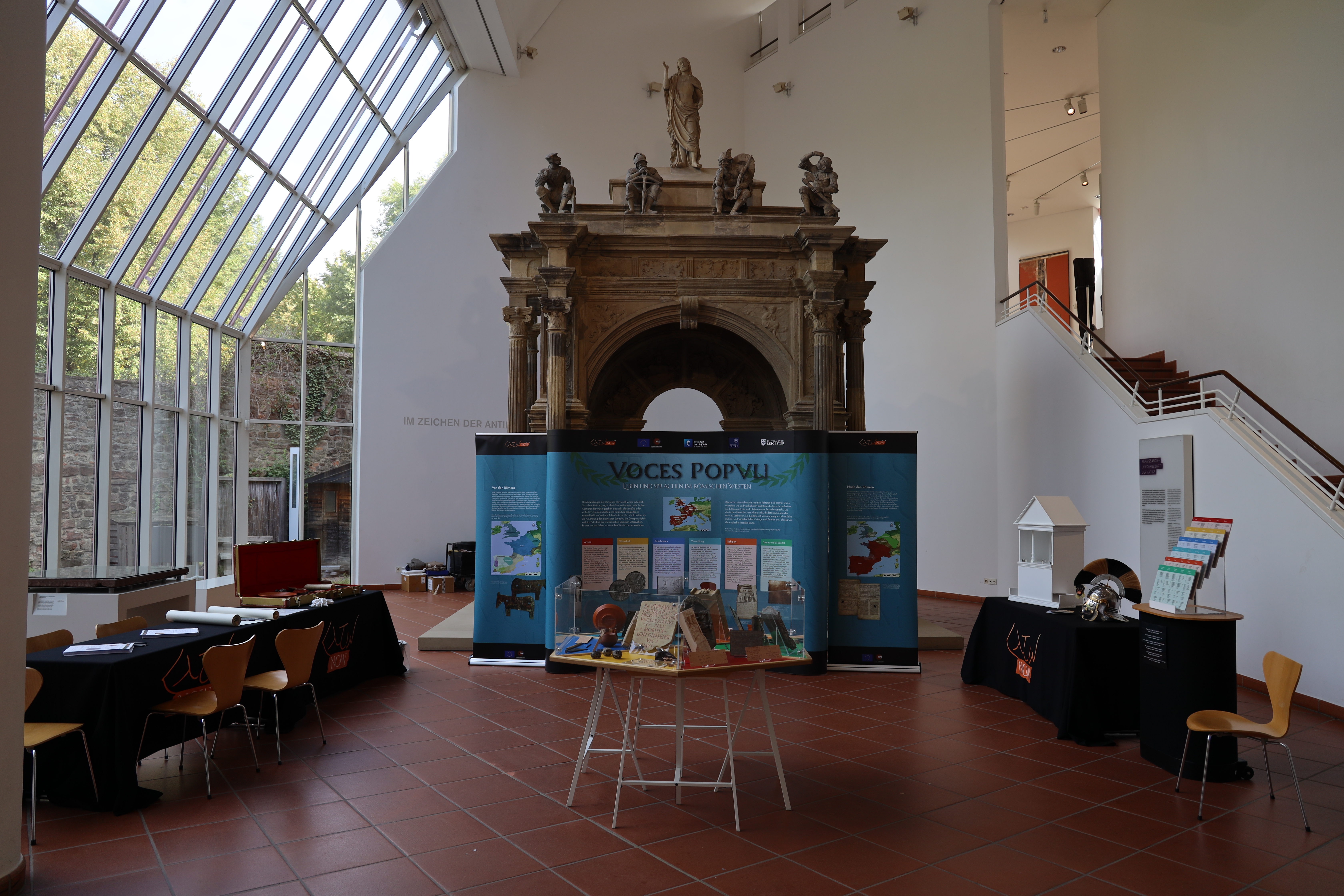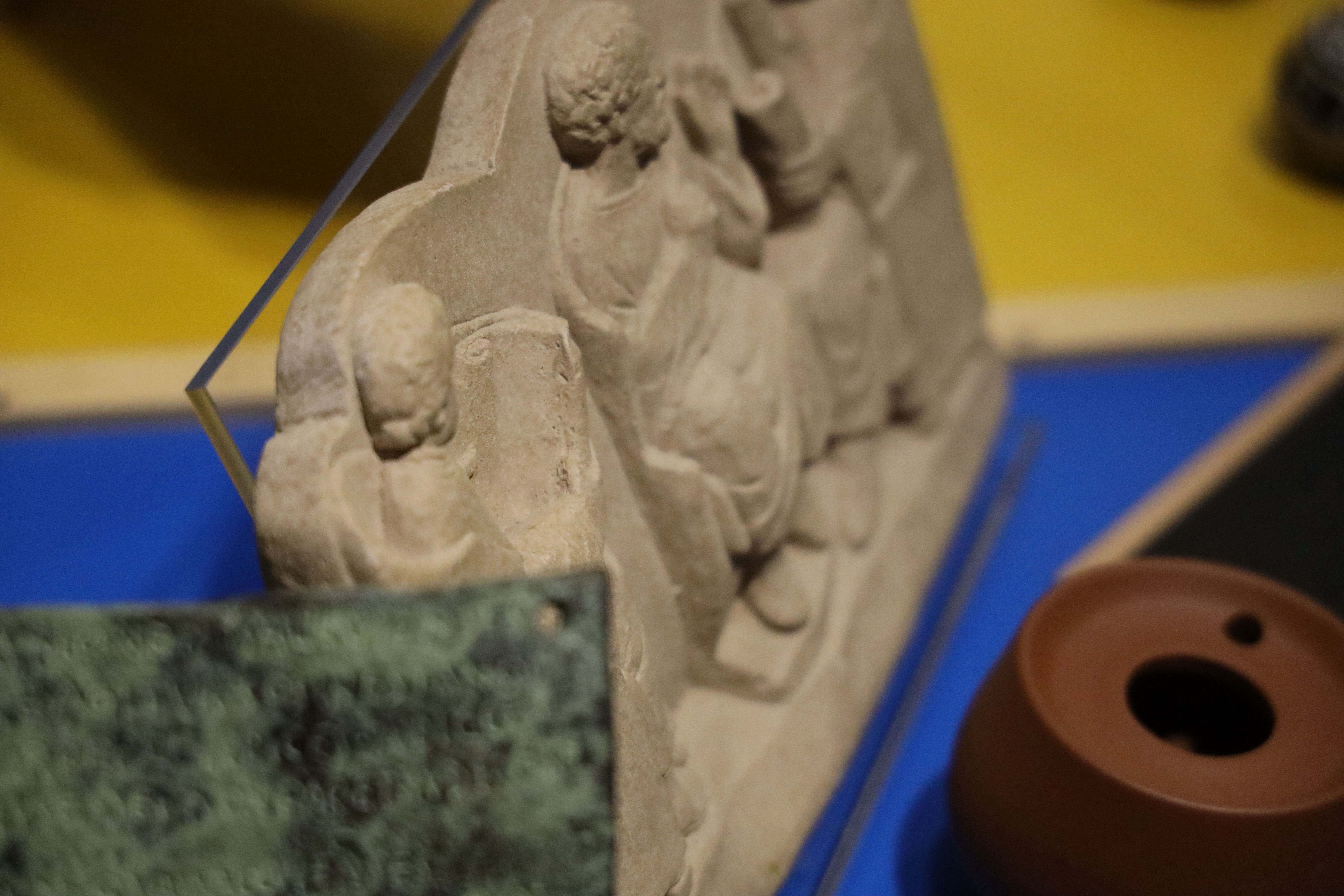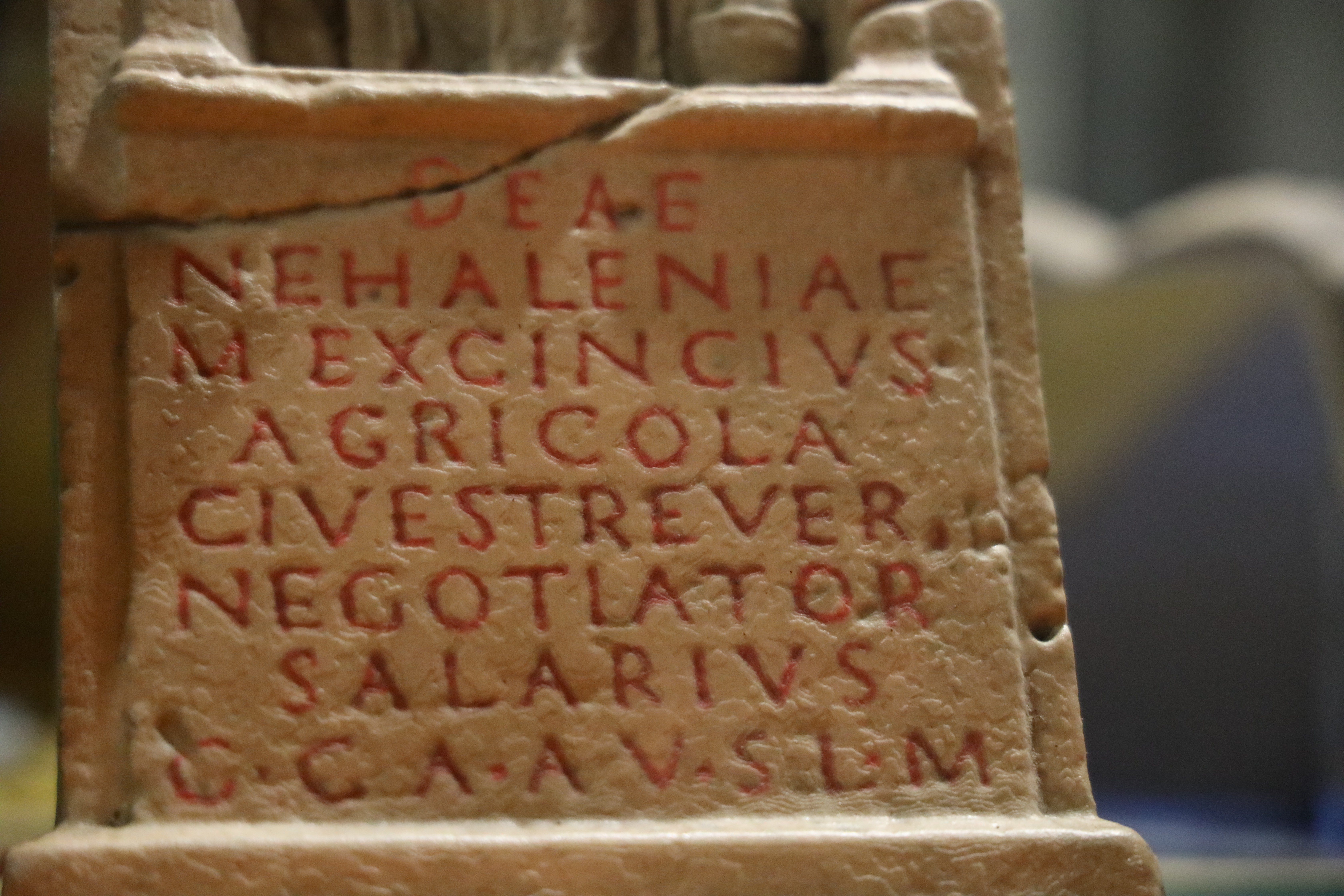By Anna Willi
When I was a student at Zurich University, our Professor of Latin literature used to go into rhapsodies over Trier, which was his home town. “Trier is full of superlatives. It is the oldest town in Germany, has the best preserved Roman mosaics, the best preserved Roman baths and the best preserved basilica north of the Alps. It is truly the Rome of the North!” I had never been able to join one of his excursions to the ancient Augusta Treverorum so I was excited to finally see it in person when VOCES POPVLI came to the Rheinisches Landesmuseum earlier this month. I was not disappointed!
The LatinNow team, reinforced by Selina, had a very warm welcome from the museum staff. They set us up in front of the Rheineck-Altar which made for a beautiful backdrop for our display.

Augusta Treverorum was the capital of the civitas Treverorum and it was also where the imperial procurator resided. In the 3rd century AD it was used as the residence of the emperor. The Roman remains are indeed impressive. One of the Roman city gates, now called Porta Nigra, survives in exceptionally good condition and provides an impressive view from the town square. Two large baths can still be seen as well as the basilica mentioned above, which was added to the imperial palace by Constantine I and preserved because it was later used as a church. Several large funerary monuments with exceptional reliefs have been excavated and the evidence for numerous Roman wine presses and vineyards in the surroundings of the town bear testament to the long history of the region’s most famous product.
In addition to such monuments in town and landscape, the Rheinisches Landesmuseum has a wealth of incredible objects, amongst them several that are of importance for the history of language and literacy in Roman times. This resulted in wonderful synergies with our exhibition. For example, their objects include the Neumagen relief with a school scene, which is also featured in our display. While our display only shows a section of the relief, the visitors in Trier were able to walk into the room next door, the ‘Gräberstraße’, to see the whole monument, including the depiction of a student just entering the scene and carrying a case with writing tablets in his hand.

What is more, two inscriptions in our display are linked to Treveri. One of them is Insus, son of Vodullus, a rider – the Treverans were famous for being skilled riders – who died in Britannia and was given a funerary monument with a Latin inscription and a colourful and at the same time gruesome depiction that shows him riding over a beheaded enemy. Insus was a Celtic-named recruit in the Roman army fighting the British Celts. Could he have been reminded of his own native Celtic language when he heard his opponents shouts in battle?

The other civis Trever in our display is Marcus Excingius Agricola, a negotiator salarius or salt trader. Possibly on his way to or from Britannia he stopped at the sanctuary of Dea Nehalennia and made a sacrifice, presumably in order to ask for safe travels and good business. To commemorate the occasion, he set up a dedicatory inscription with a relief that depicts the goddess. The inscription was found near Colijnsplaat (The Netherlands) and is one of numerous dedications to Nehalennia found in this area. This Treveran, who may have been of Celtic-speaking origins given his name Excingius, set up an inscription in Roman fashion and in Latin, the lingua franca of his profession, to an indigenous Germanic/Celtic goddess.

The two days we spent in Trier coincided with the school holidays, and the second day with the national holiday ‘Tag der Deutschen Einheit’. Many families but also teachers visited us, and it quickly became clear that the inhabitants of Trier and its surroundings have a deep interest in the Roman past. Many visitors stayed for 30 minutes or more, asking questions about the objects and deciphering Old Roman Cursive with us. We really enjoyed discussing writing techniques and languages with them – and we may even have convinced one or two teachers to teach their students about how ‘non-classical’ Latin can tell us something about the people who used it!
Vielen Dank, Trier, wir kommen wieder!